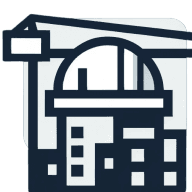6 Ways to Increase Energy Efficiency in Building Design
Imagine revolutionizing the way buildings consume energy, leading to both cost savings and environmental benefits. To explore this, leading voices from the industry, including a CEO and a Chief Executive Officer, share their strategies for enhancing energy efficiency. The discussion kicks off with insights on installing high-efficiency propane systems and concludes with practical solutions for boosting efficiency. With six expert insights in total, this article promises to equip readers with actionable knowledge for their own projects.
- Install High-Efficiency Propane Systems
- Renovate with Energy-Efficient Upgrades
- Use Data-Driven Energy Solutions
- Incorporate Energy Efficiency in Flips
- Focus on Basic Energy-Efficiency Upgrades
- Boost Efficiency with Practical Solutions
Install High-Efficiency Propane Systems
We partner with builders on new-construction single-family homes to install high-efficiency propane-fired heating systems and propane tanks. Propane has proven to be the way forward in the Northeast as demand for oil has declined. This shift is driven by propane's significantly higher efficiency rates, with some heating systems achieving up to 95% efficiency compared to 86% for oil.
For example, we've performed many propane conversions for homeowners over the past two months, as lots of homeowners like to do this type of work in the fall before heating season. These systems help homeowners save on energy costs while reducing their carbon footprint, making propane an ideal solution for modern, energy-conscious construction.

Renovate with Energy-Efficient Upgrades
I recently renovated a 1960s ranch-style home, where we added spray-foam insulation and replaced all windows with double-pane units, which dropped the monthly energy bills from $300 to $125. In my rental properties, I've found that installing smart thermostats and LED lighting gives us about a 30% reduction in energy usage while making the units more attractive to environmentally conscious tenants. When flipping homes, I always look for opportunities to add energy-efficient features because they not only help with utility costs but also increase the property's value.
Use Data-Driven Energy Solutions
Our energy-efficient building design services at Webineering focus on solutions that combine cutting-edge technology with practical data-driven decision-making. One that comes to mind is a distribution center where we went through the design process with an efficient HVAC system and careful energy modeling. Rather than being based on simple guesses, we made predictions about the building's energy consumption based on actual weather and occupancy conditions in real-time. This enabled us to tweak the locations of vents, layer insulation, and incorporate energy-recovery systems that benefited heating and cooling.
This project was able to reduce annual energy use by 40% when compared with similar installations in the same climate zone. One of the most groundbreaking was the modular, adaptive lighting that scaled up to the amount of natural light streaming in. The method not only saved energy, but also improved the working conditions of employees. This project's success confirmed the concept that energy savings start with rigorous analysis, and evolve through continuous modifications that reflect actual usage. Through a combination of technology and planning, we built a building that achieved extremely low energy consumption levels without sacrificing usability or aesthetics.

Incorporate Energy Efficiency in Flips
As a former mechanical engineer, I get excited about incorporating energy efficiency into our flips—like the 1960s ranch we just finished, where we added spray-foam insulation and Energy Star appliances, cutting the power bills nearly in half. During our owner-financing projects, I love teaching new homeowners about these improvements because they make such a difference in monthly expenses, especially here in Huntsville's humid climate.
Focus on Basic Energy-Efficiency Upgrades
I've noticed that focusing on basic energy-efficiency upgrades like double-pane windows and proper insulation gives our homeowners the best bang for their buck in Kansas City's climate. Just last month, we helped a client save nearly 30% on their energy bills after installing new windows and adding blown-in insulation in their 1960s ranch home, which made a huge difference during our recent cold snap.

Boost Efficiency with Practical Solutions
I'm passionate about helping clients find practical ways to boost building efficiency without breaking the bank. Last year, our consultants guided a commercial renovation project that achieved 45% energy savings through a combination of LED lighting, smart HVAC controls, and improved insulation—all with just a 3-year payback period. Based on hundreds of projects, I've found that taking a whole-building approach and prioritizing the envelope first typically delivers the best results.




